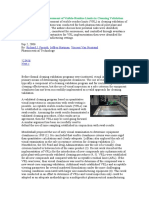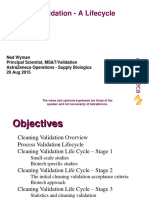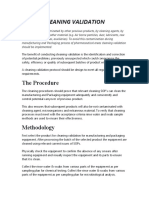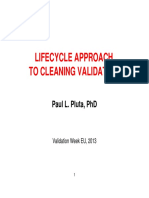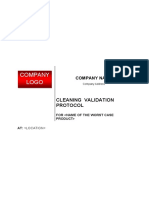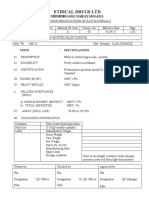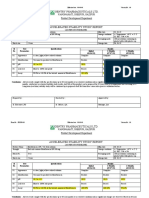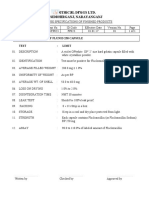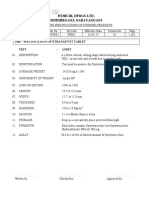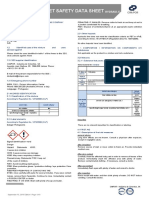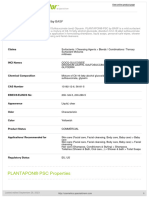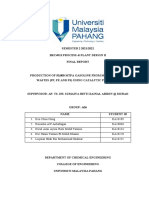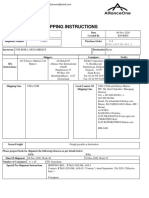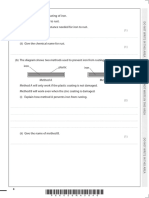100% found this document useful (6 votes)
1K views22 pagesCleaning Validation Protocol
This document provides a validation protocol for cleaning equipment used in the production of Product Name. It outlines the cleaning procedure, equipment to be validated, sampling and testing methods, acceptance criteria, and results from validating the cleaning of three batches. The validation aims to demonstrate the effectiveness of the cleaning procedure in removing residues of Product Name and ensures no residual detergent remains.
Uploaded by
Bejoy KarimCopyright
© © All Rights Reserved
We take content rights seriously. If you suspect this is your content, claim it here.
Available Formats
Download as DOC, PDF, TXT or read online on Scribd
100% found this document useful (6 votes)
1K views22 pagesCleaning Validation Protocol
This document provides a validation protocol for cleaning equipment used in the production of Product Name. It outlines the cleaning procedure, equipment to be validated, sampling and testing methods, acceptance criteria, and results from validating the cleaning of three batches. The validation aims to demonstrate the effectiveness of the cleaning procedure in removing residues of Product Name and ensures no residual detergent remains.
Uploaded by
Bejoy KarimCopyright
© © All Rights Reserved
We take content rights seriously. If you suspect this is your content, claim it here.
Available Formats
Download as DOC, PDF, TXT or read online on Scribd
/ 22
















